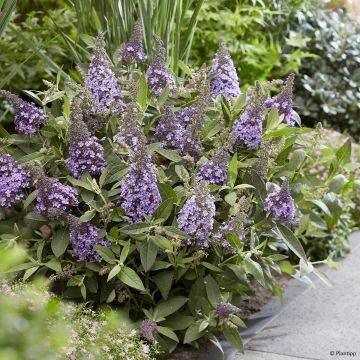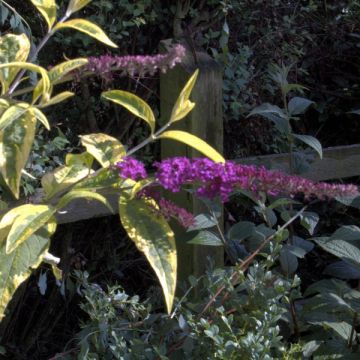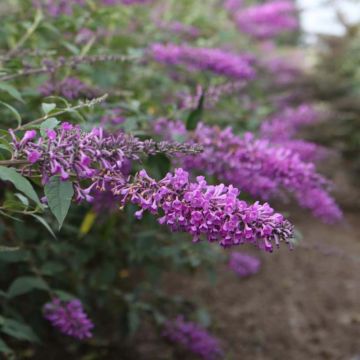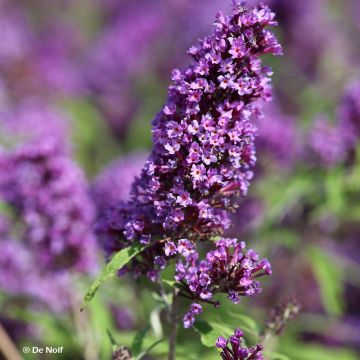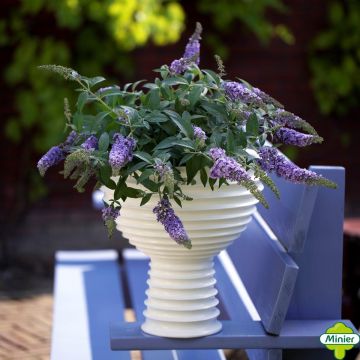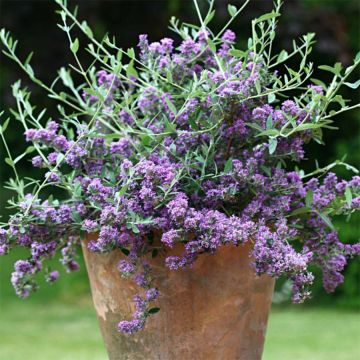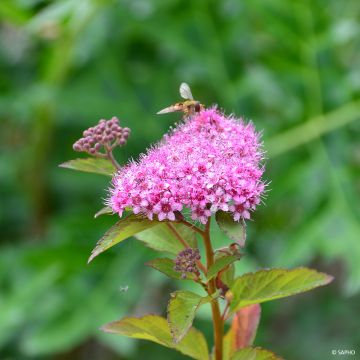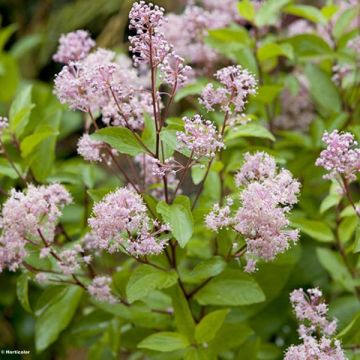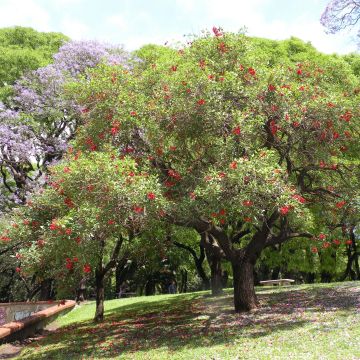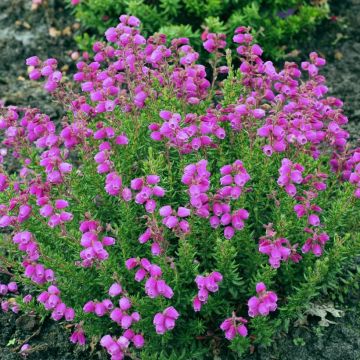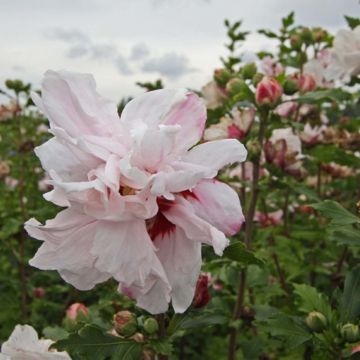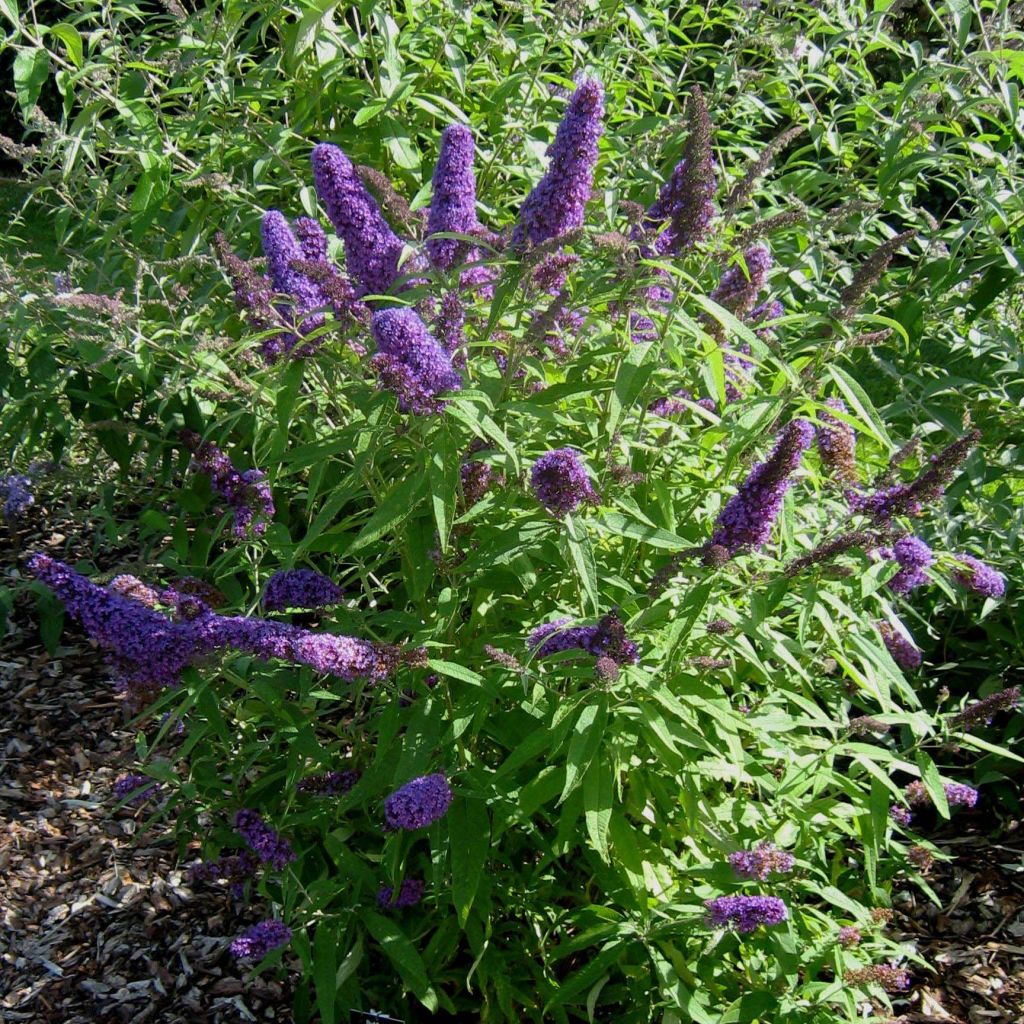

Buddleja davidii Camberwell Beauty - Butterfly Bush
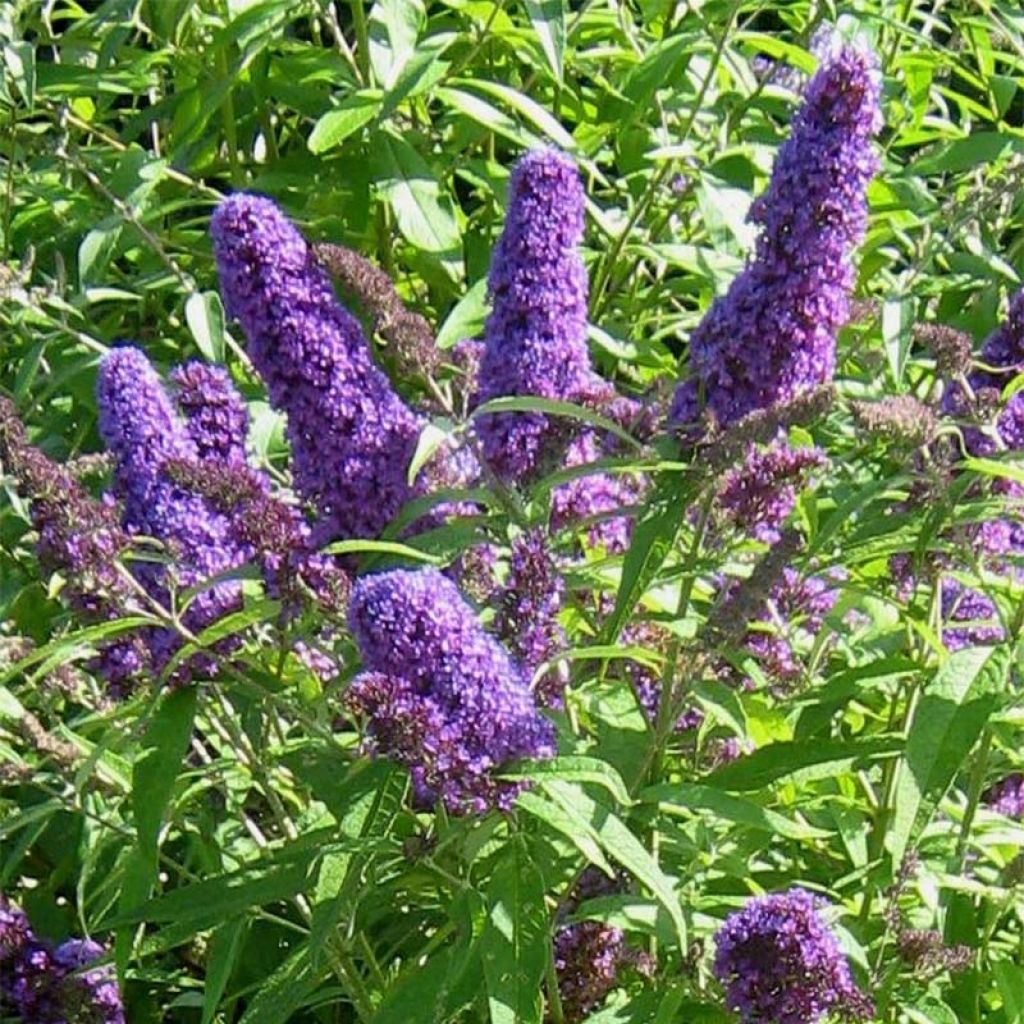

Buddleja davidii Camberwell Beauty - Butterfly Bush
Buddleja davidii Camberwell Beauty - Butterfly Bush
Buddleja x davidii Camberwell Beauty
Butterfly Bush, Summer Lilac
Bush arrived with a few broken branches. It is taller than I had imagined. To be seen next year during the flowering.
EVE, 15/10/2020
Why not try an alternative variety in stock?
View all →This plant carries a 24 months recovery warranty
More information
We guarantee the quality of our plants for a full growing cycle, and will replace at our expense any plant that fails to recover under normal climatic and planting conditions.
From €5.90 for pickup delivery and €6.90 for home delivery
Express home delivery from €8.90.

Does this plant fit my garden?
Set up your Plantfit profile →
Description
Buddleia Camberwell Beauty ('Camkeep') (English Butterfly Series) is a recent but little-known variety of butterfly bush. It forms large panicles divided into several spikes, covered with thousands of small deep violet flowers, illuminated by a red-orange heart. Its flowering lasts all summer and attracts pollinators, especially butterflies, in large numbers. Its medium green foliage persists in mild winter climates, offering an additional asset in winter. It is a bushy and compact shrub with a rounded habit, whose dimensions are well suited to small gardens and sunny borders. Hardy and very easy to grow in all sunny soils.
Camberwell Beauty was developed by Elizabeth Keep in her garden after retirement and received the RHS Award of Garden Merit. Particularly compact, it produces branched panicles 25 cm to 30 cm (9.8 in to 11.8 in) long.
Camberwell Beauty will not exceed 1 m (3.3 ft) in height with a spread of 1.5 m (4.9 ft). This variety develops bushy and rounded vegetation, with short and dense branches, quickly forming a dome higher than wide. The foliage is semi-evergreen, remaining on the branches throughout the winter in mild climates, but deciduous in cold regions. It consists of slightly hairy, medium green, elliptical leaves measuring about 8 cm to 10 cm (3.1 in to 3.9 in) long and 3 cm to 4 cm (1.2 in to 1.6 in) wide, with young shoots that highlight the intense flower colouration. The plant blooms from July to September. Emerging from the foliage are panicles of flowers, divided into several spikes. These flowers are blue-violet in colour and release a light honey fragrance, highly sought after by pollinating insects. They fade discreetly and do not need to be pruned. This hardy shrub does not suffer from occasional drought in deep soil. When grown in pots, it will require regular watering and some fertiliser to support its growth and flowering.
Camberwell Beauty is perfect in a pot on a terrace, and will easily find its place in the garden, even when space is limited. It integrates easily at the front of a perennial or shrub border and looks good at the edge of a pathway or above a wall. Plant with ground cover roses, dwarf abelias, pink coneflowers, and asters.
Report an error about the product description
Buddleja davidii Camberwell Beauty - Butterfly Bush in pictures
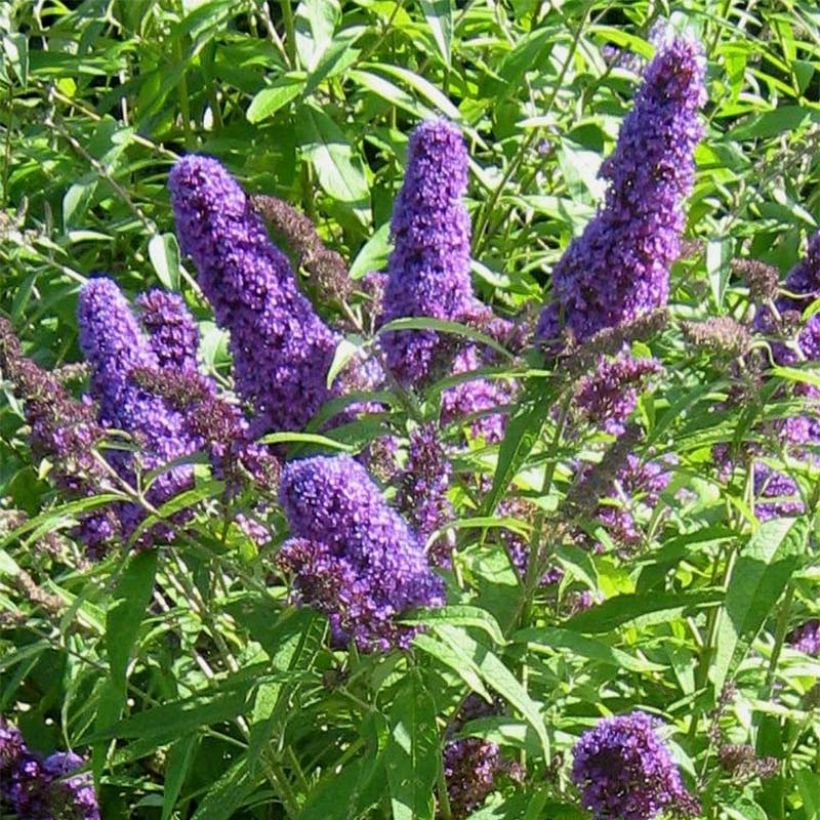

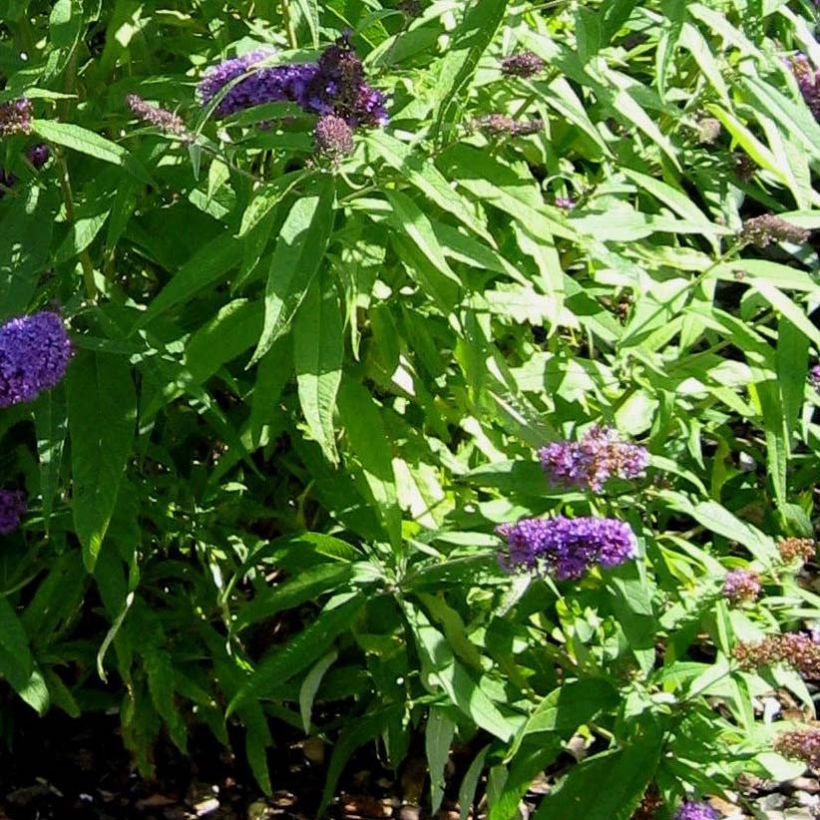

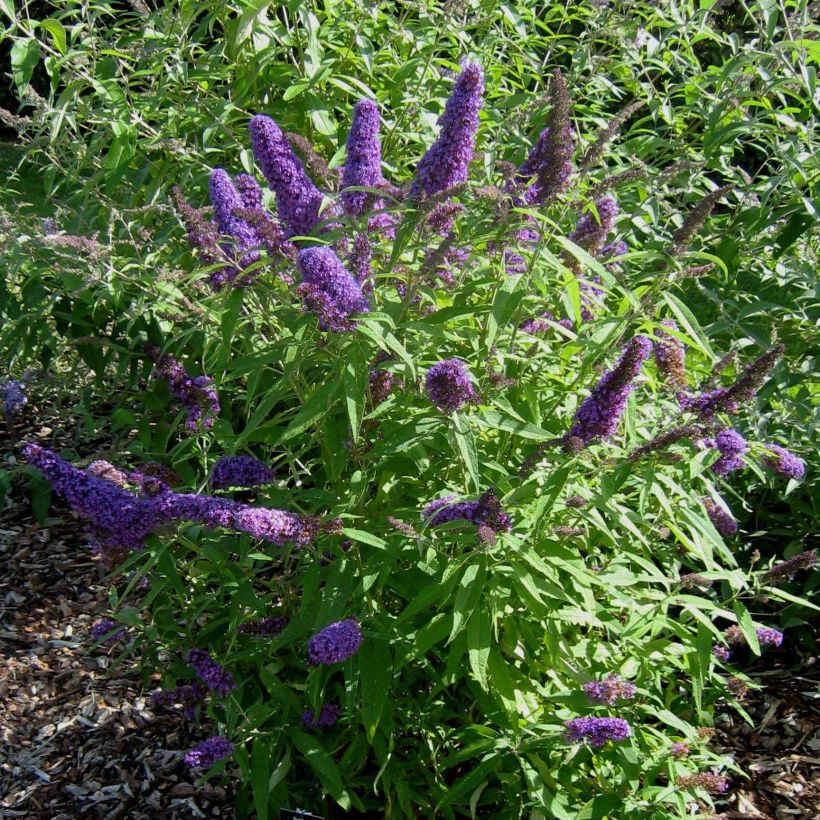

Plant habit
Flowering
Foliage
Botanical data
Buddleja
x davidii
Camberwell Beauty
Buddlejaceae
Butterfly Bush, Summer Lilac
Cultivar or hybrid
Other Buddleja -Butterfly bush
Planting and care
Camberwell Beauty is easy to grow, as it is a low-maintenance plant. It thrives in sunny locations, but also flowers in partial shade. Plant it in spring or early autumn, in ordinary, well-worked and well-drained soil. It can tolerate limestone and mediocre soil. Once established, the plant will tolerate periods of moderate drought. It has no significant enemies. However, beware of caterpillars, weevils, and red spider mites that can infest it. Pruning vigorously after flowering and/or in early spring maintains a compact and branching habit and encourages abundant flowering.
Planting period
Intended location
Care
-
, onOrder confirmed
Reply from on Promesse de fleurs
Summer-flowering shrubs
Haven't found what you were looking for?
Hardiness is the lowest winter temperature a plant can endure without suffering serious damage or even dying. However, hardiness is affected by location (a sheltered area, such as a patio), protection (winter cover) and soil type (hardiness is improved by well-drained soil).

Photo Sharing Terms & Conditions
In order to encourage gardeners to interact and share their experiences, Promesse de fleurs offers various media enabling content to be uploaded onto its Site - in particular via the ‘Photo sharing’ module.
The User agrees to refrain from:
- Posting any content that is illegal, prejudicial, insulting, racist, inciteful to hatred, revisionist, contrary to public decency, that infringes on privacy or on the privacy rights of third parties, in particular the publicity rights of persons and goods, intellectual property rights, or the right to privacy.
- Submitting content on behalf of a third party;
- Impersonate the identity of a third party and/or publish any personal information about a third party;
In general, the User undertakes to refrain from any unethical behaviour.
All Content (in particular text, comments, files, images, photos, videos, creative works, etc.), which may be subject to property or intellectual property rights, image or other private rights, shall remain the property of the User, subject to the limited rights granted by the terms of the licence granted by Promesse de fleurs as stated below. Users are at liberty to publish or not to publish such Content on the Site, notably via the ‘Photo Sharing’ facility, and accept that this Content shall be made public and freely accessible, notably on the Internet.
Users further acknowledge, undertake to have ,and guarantee that they hold all necessary rights and permissions to publish such material on the Site, in particular with regard to the legislation in force pertaining to any privacy, property, intellectual property, image, or contractual rights, or rights of any other nature. By publishing such Content on the Site, Users acknowledge accepting full liability as publishers of the Content within the meaning of the law, and grant Promesse de fleurs, free of charge, an inclusive, worldwide licence for the said Content for the entire duration of its publication, including all reproduction, representation, up/downloading, displaying, performing, transmission, and storage rights.
Users also grant permission for their name to be linked to the Content and accept that this link may not always be made available.
By engaging in posting material, Users consent to their Content becoming automatically accessible on the Internet, in particular on other sites and/or blogs and/or web pages of the Promesse de fleurs site, including in particular social pages and the Promesse de fleurs catalogue.
Users may secure the removal of entrusted content free of charge by issuing a simple request via our contact form.
The flowering period indicated on our website applies to countries and regions located in USDA zone 8 (France, the United Kingdom, Ireland, the Netherlands, etc.)
It will vary according to where you live:
- In zones 9 to 10 (Italy, Spain, Greece, etc.), flowering will occur about 2 to 4 weeks earlier.
- In zones 6 to 7 (Germany, Poland, Slovenia, and lower mountainous regions), flowering will be delayed by 2 to 3 weeks.
- In zone 5 (Central Europe, Scandinavia), blooming will be delayed by 3 to 5 weeks.
In temperate climates, pruning of spring-flowering shrubs (forsythia, spireas, etc.) should be done just after flowering.
Pruning of summer-flowering shrubs (Indian Lilac, Perovskia, etc.) can be done in winter or spring.
In cold regions as well as with frost-sensitive plants, avoid pruning too early when severe frosts may still occur.
The planting period indicated on our website applies to countries and regions located in USDA zone 8 (France, United Kingdom, Ireland, Netherlands).
It will vary according to where you live:
- In Mediterranean zones (Marseille, Madrid, Milan, etc.), autumn and winter are the best planting periods.
- In continental zones (Strasbourg, Munich, Vienna, etc.), delay planting by 2 to 3 weeks in spring and bring it forward by 2 to 4 weeks in autumn.
- In mountainous regions (the Alps, Pyrenees, Carpathians, etc.), it is best to plant in late spring (May-June) or late summer (August-September).
The harvesting period indicated on our website applies to countries and regions in USDA zone 8 (France, England, Ireland, the Netherlands).
In colder areas (Scandinavia, Poland, Austria...) fruit and vegetable harvests are likely to be delayed by 3-4 weeks.
In warmer areas (Italy, Spain, Greece, etc.), harvesting will probably take place earlier, depending on weather conditions.
The sowing periods indicated on our website apply to countries and regions within USDA Zone 8 (France, UK, Ireland, Netherlands).
In colder areas (Scandinavia, Poland, Austria...), delay any outdoor sowing by 3-4 weeks, or sow under glass.
In warmer climes (Italy, Spain, Greece, etc.), bring outdoor sowing forward by a few weeks.

































